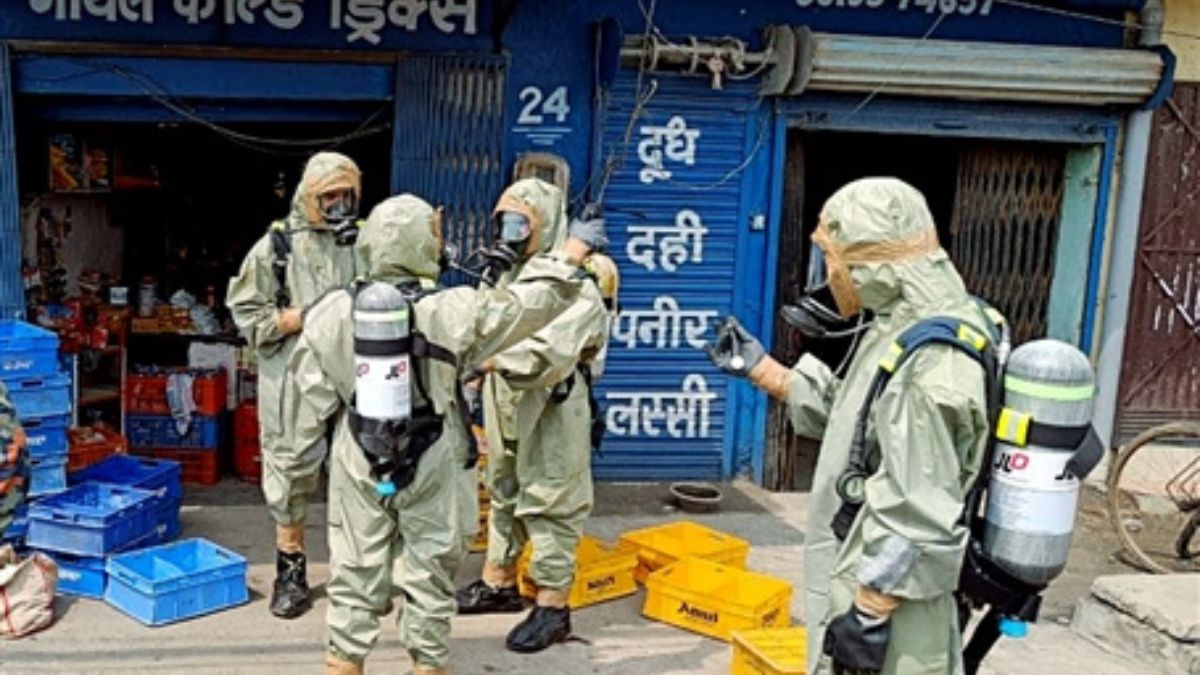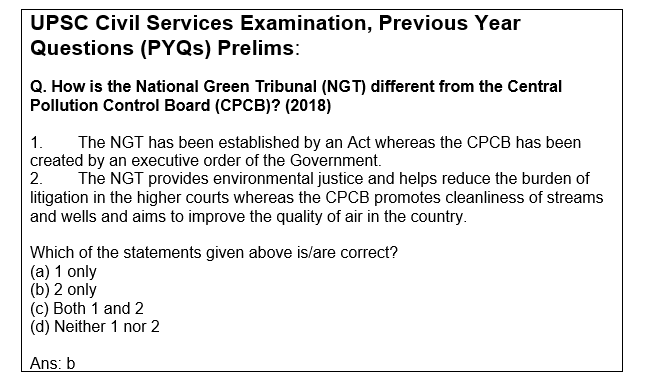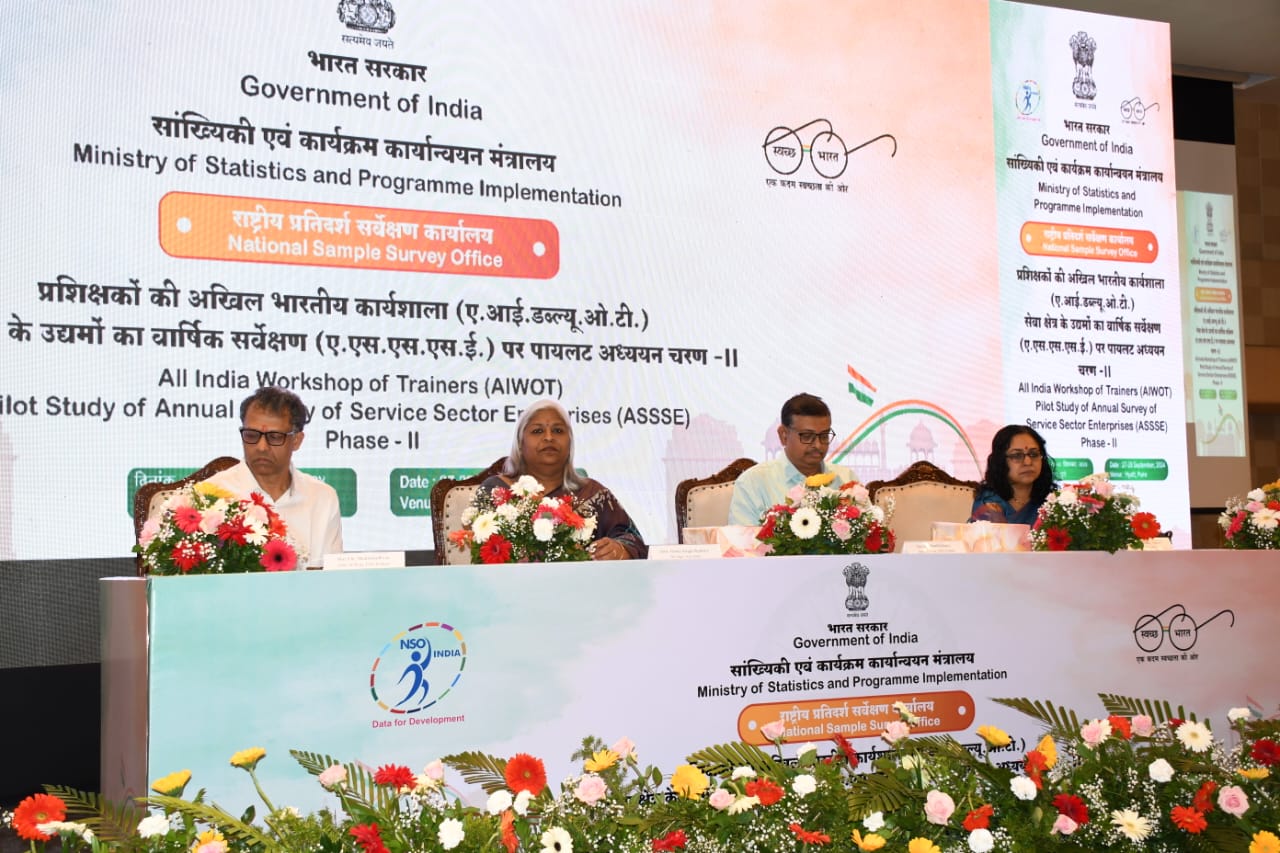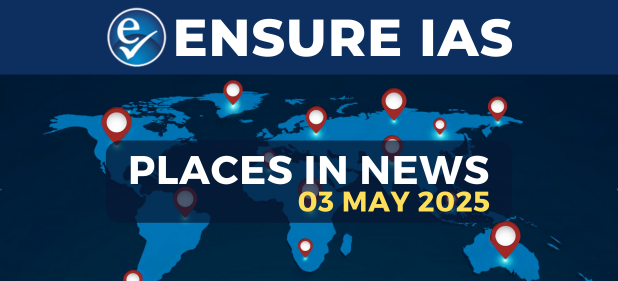- Courses
- GS Full Course 1 Year
- GS Full Course 2 Year
- GS Full Course 3 Year
- GS Full Course Till Selection
- CSAT
- 5 LAYERED ARJUNA Mentorship
- Public Administration Optional
- Online Program
- GS Recorded Course
- NCERT (Recorded 500+ Hours)
- Polity Recorded Course
- Geography Recorded Course
- Economy Recorded Course
- AMAC Recorded Course
- Modern India, Post Independence & World History
- Environment Recoded Course
- Governance Recoded Course
- Science & Tech. Recoded Course
- International Relations and Internal Security Recorded Course
- Disaster Management Module Course
- Ethics Recoded Course
- Essay Recoded Course
- Current Affairs Recoded Course
- ABOUT US
- OUR TOPPERS
- TEST SERIES
- FREE STUDY MATERIAL
- VIDEOS
- CONTACT US
Ludhiana Gas Tragedy
Ludhiana Gas Tragedy
03-05-2023

Latest Context:
- The National Green Tribunal (NGT) after taking suo-moto cognisance based on media reports, has constituted an eight-member fact-finding committee to inquire into the deaths of 11 people due to the recent incident of gas leak in Ludhiana district of Punjab.
Understanding the Tragedy:
- The Police has suspected that a poisonous gas may have emanated from a partially open manhole in the locality and spread to the shops and houses nearby causing deaths of 11 people, due to “inhalation poisoning”.
- Forensic experts have suspected Hydrogen Sulphide – a neurotoxic gas – to be responsible for the tragedy, probably produced as a result of a reaction of some acidic waste which was thrown into the sewer with methane, carbon monoxide and other sewerage gases to produce hydrogen sulphide.
Nature of toxins involved:
Neurotoxins:
- Neurotoxins are poisonous substances which can directly affect the nervous system.
- These substances can disrupt or even kill neurons or nerve cells, which are important for transmitting and processing signals in the brain and other parts of the nervous system.
Neurotoxic Gases:
- Methane, hydrogen sulphide, carbon monoxide and carbon dioxide are common neurotoxic gases.
- Methane and carbon monoxide are odourless gases, but hydrogen sulphide has a pungent odour and in higher concentration can be fatal for humans.
- Hydrogen sulphide is so toxic that even one breath of it taken inside can kill a person.
Legal Safeguards Against Chemical Disasters in India:
- The Environment Protection Act (EPA) 1986 which mandates the government to improve the overall environment and set standards of inspection of industrial units.
- The Public Liability Insurance Act, 1991 to provide relief to persons affected by accidents that occur while handling hazardous substances.
- Hazardous Waste (Management Handling and Transboundary Movement) Rules, 1989, for industries to identify major accident hazards, and take preventive measures and submit a report to the designated authorities.
- Manufacture, Storage and Import of Hazardous Chemicals Rules, 1989, for the importers to furnish complete product safety information to the competent authority and to transport imported chemicals in accordance with the amended rules.
- Chemical Accidents (Emergency, Planning, Preparedness and Response) Rules, 1996 requires the central govt to constitute a central crisis group for management of chemical accidents; set up quick response mechanism termed as the crisis alert system.
- The National Environment Appellate Authority Act, 1997: Under this Act, the National Environment Appellate Authority can hear appeals regarding the restriction of areas in which any industries, operations or processes or class of industries shall not be carried out or shall be carried out subject to certain safeguards under the EPA 1986.
National Green Tribunal:
About:
- A statutory body set up under the National Green Tribunal (NGT) Act, 2010 for effective and expeditious disposal of cases relating to environmental protection and conservation of forests and other natural resources.
- With NGT, India became the 3rd country in the world to set up a specialised environmental tribunal, only after Australia and New Zealand.
- NGT is mandated to make disposal of applications or appeals finally within 6 months of filing of the same.
- The NGT has five places of sitting, New Delhi is the principal place of sitting and Bhopal, Pune, Kolkata and Chennai are the other four.
Powers:
- The Tribunal has jurisdiction over all civil cases involving substantial questions relating to the environment (including enforcement of any legal right relating to environment).
- It can take Suo Motu cognizance of the environmental cases.
- Apart from original jurisdiction side on filing of an application, NGT also has appellate jurisdiction to hear appeal as a Court (Tribunal).
- NGT is not bound by the procedure laid down under the CPC 1908 but shall be guided by principles of 'natural justice'.
- An order/decision/award of Tribunal is executable as a decree of a civil court.




